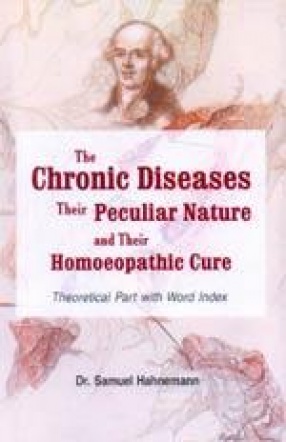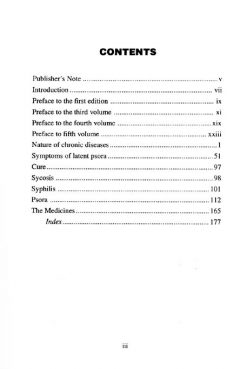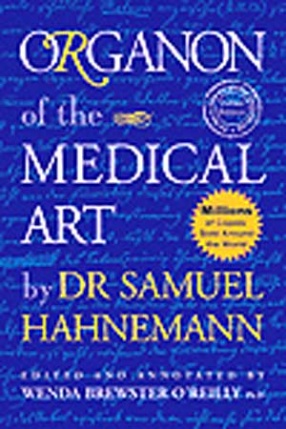This volume, which contains the theoretical part of Hahnemann’s Chronic Diseases has been issued at the urgent request of several Professors in Homoeopathic Medical Colleges, who wish to use it as a college text book. The basic concepts of "miasms" are discussed in this book. The Chronic Diseases (Theoretical Part) presently available in the market was typesetted around 100 years back. To make the book user friendly we have refurnished it. The positive changes we made are as follows: 1. The print size of the book has been increased from 5" x 3" to 7" x 4" which makes it more used friendly. 2. A new font has been used which is bigger in size and is a pleasure to read. 3. Footnotes which were earlier given at the bottom were difficult to find and read. In this new book, we have incorporated them in the main text at the intended places in brackets but in small fonts. This makes the reading and understanding more effortless. 4. Lastly but very importantly a word index of 16 pages has been added at the end of the book which makes it very easy to find the required portion of the text.
ABOUT THE AUTHOR Samuel Hahnemann
Samuel Hahnemann was the founder of Homoeopathy. He established the fundamental principles of the science and art of Homoeopathy. He is called the Father of Experimental Pharmacology because he was the first physician to prepare medicines in a specialized way; proving them on healthy human beings, to determine how the medicines acted to cure diseases. Before Hahnemann, medicines were given on speculative indications, mainly on the basis of authority without experimental verification. Hahnemann discovered the remedial powers of drugs and inert substances such as gold, platinum, silica, vegetable charcoal, lycopodium, etc. By preparing the medicines through potentization, these inert and insoluble substances became soluble in alcohol or water and were charged with medicinal force. Dr. Hahnemann espoused the law of cure known as "Similia Similibus Curentur", or "Like Cures Like". This means that a remedy that produces symptoms in a healthy person will cure those same symptoms when manifested by a person in a diseased state. This law of cure has been verified by millions of homoeopaths all over the world since the time of Hahnemann. Hahnemann discovered the primary and secondary actions of remedies. The primary action results from the first encounter between the vital force and the external agent, and the secondary action is a result of the vital force's reaction to the symptoms of that primary encounter. This discovery led him to the curative powers of poisonous substances. Dr. Hahnemann described the different aspects of 'acute' and 'chronic' diseases. Acute diseases are transitory; they have a beginning and an end, whereas the chronic diseases are co-existent with life. Either they are present in a manifest or a latent state. From this work came the chronic miasms of Psora, Syphilis, and Sycosis. Dr. Hahnemann was the progenitor of several modern medical approaches. Deeming the treatment of insane patients to be cruel and harmful, he advised a humane treatment for the insane. He cured many insane patients with homeopathy, and became famous for this success. Dr. Hahnemann was quick to recognize poor hygiene as a contributory cause to the spread of disease. His success with cholera and typhoid fever was in part due to this recognition. Hahnemann also emphasized the importance of nursing, diet, bed rest, and isolation of patients during epidemic diseases. Hahnemann described 'Noxious' principles as the precursors of certain disease states. Dr. Hahnemann treated thousands of difficult and chronic cases that defied the best care from allopaths all over Europe. Thus, he became so famous that physicians from Europe and America came to him for coaching in the new science and art of healing, called Homoeopathy.










There are no reviews yet.